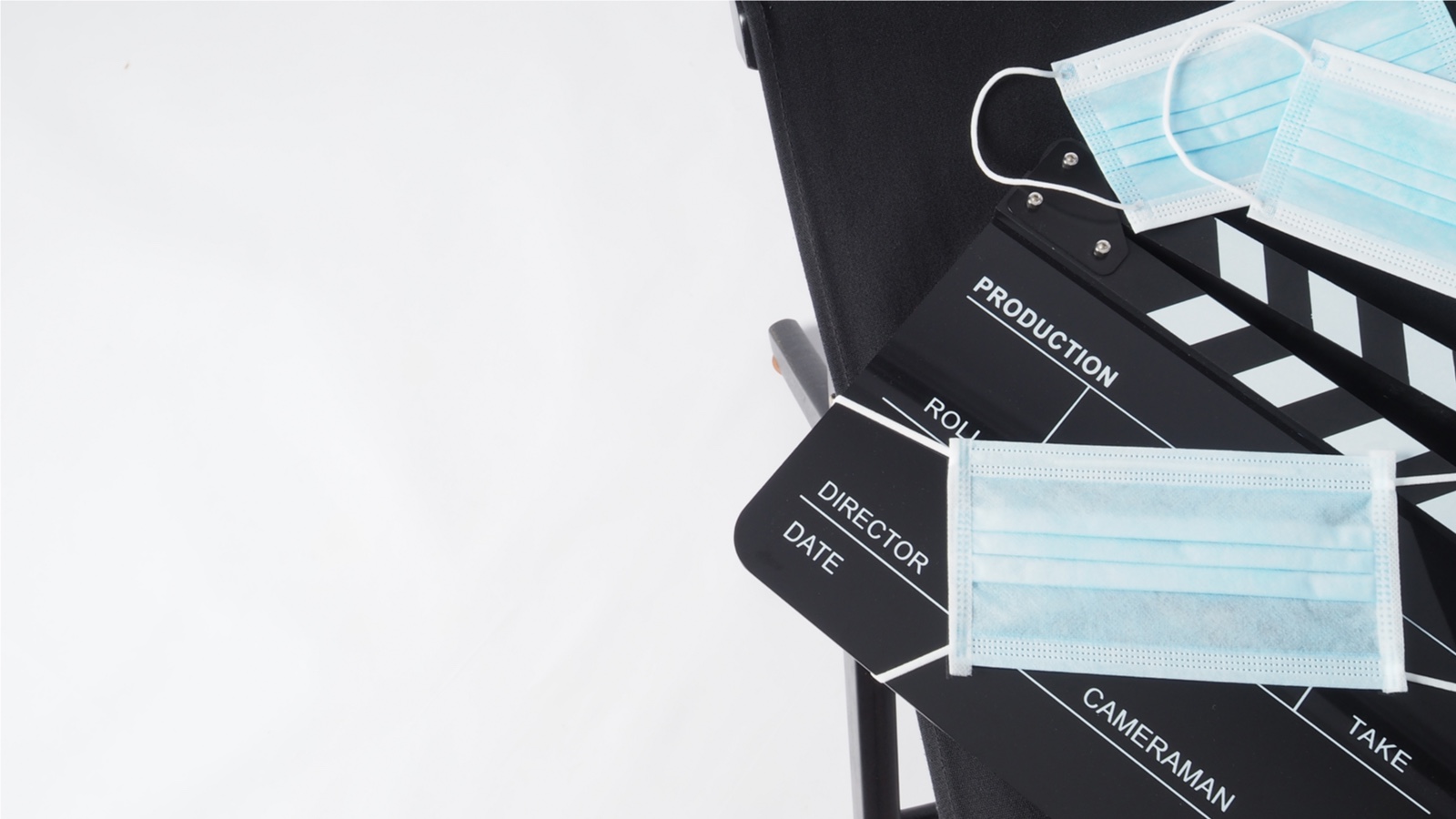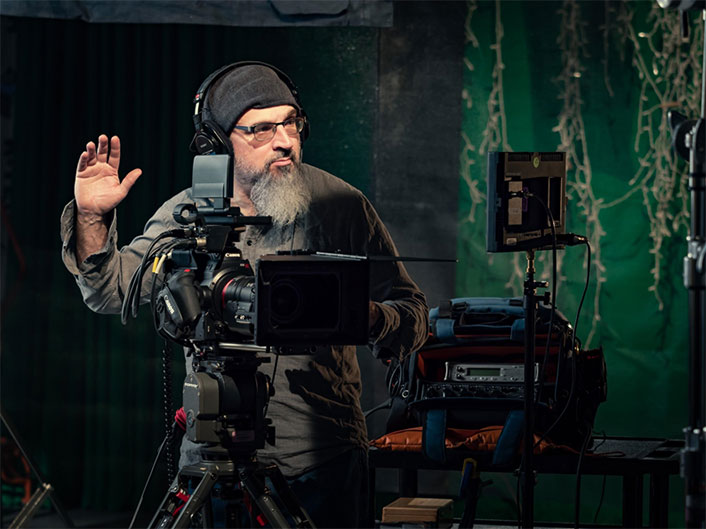With the rapid shift to remote learning during the COVID-19 crisis, demand for instructional videos exploded, and turnaround times shriveled. Finding ways to streamline the production process was critical.

Like most seismic events, the disruption caused by the COVID-19 pandemic has fostered significant changes in the structure and processes of our society. These changes include the processes that govern those of us who work in higher education. From provosts to parking attendants, we have all had to adapt the way we work.
As an electronic media producer at a mid-sized regional university, I've spent twenty-five years building a production protocol that reflects industry standards and best practices. My process has enabled me to deliver high-quality instructional and institutional videos in an efficient, timely manner. The rapid shift to remote learning changed all that. Suddenly, demand for instructional videos exploded, and turnaround times shriveled. It didn't take me long to realize that if I hoped to keep up with demand, I'd have to change how I did my job.
As I recently sat down to reflect on my experience over the last year, I was reminded of the story of the STEN gun in the World War II era. In 1940, German forces had driven the British back across the English Channel, an event that left Great Britain reeling. As the British retreated, they were forced to abandon tons of equipment, including thousands of Lee-Enfield No. 4 rifles. To replace those rifles, Great Britain needed time and money, both of which were in short supply.
As a result, Reginald Shepherd and Harold Turpin, designers at Britain's Royal Small Arms Factory, threw out their playbook and began experimenting with faster, cheaper production models. Cobbling together what amounted to a length of exhaust pipe, screws from the hardware store, and a mattress spring, they developed the STEN gun. Few would characterize the STEN as a "good" gun, but in the dark days of 1940, it was good enough to get Great Britain back in action.
The key to Shepherd and Turpin's success was their willingness to let go of entrenched ideas. Just as World War II had forced Shepherd and Turpin to adapt, COVID-19 forced me to scrutinize my video production process from top to bottom. Like any other production process, video production often involves juggling the classic constraints of time, quality, and cost. Taking a page from Shepherd and Turpin's playbook, I decided that producing videos as quickly and cost-efficiently as possible was the priority.
Because faculty needed videos quickly, finding ways to streamline the production process was critical. That streamlining started with pre-production. Anyone who has ever made a video knows that for every minute of a video seen on screen, there are hours of work that happen behind the scenes. Even a simple video recorded from a desktop requires significant prep work.
The first pre-production "best practice" I scrutinized was the script. Created in tandem with subject matter experts, the script typically serves as a sort of project roadmap. Videographers who go into shoots without scripts are just asking for trouble. Pressed for time, I decided to trust the disciplinary knowledge of the seasoned instructors with whom I was working and my deep knowledge of the craft. I also decided to standardize the production process by creating templates that allowed me to make a lot of production decisions before the cameras rolled. With all this in place, I hoped to be able to reduce the time it took to shoot and edit a video from weeks to a few days.
I also scrutinized my equipment setup. Before COVID-19, I had proudly traveled "heavy" when it came to equipment. I liked to show up to a shoot prepared for anything. But faced with the prospect of having to potentially film two or three videos per day by myself, I knew I had to lighten my load.

To get where I needed to be, I decided to reduce my equipment to whatever could fit on one cart. The bulk of the space was taken up by two video cameras and their tripods. I was tempted to pare it down to one camera, but I hoped a second camera might enrich the shoot by allowing us to film close-ups. Though it broke my heart to do so, I left all my film lights in the studio, knowing that I simply didn't have the time or extra crew needed to manage them. While insubstantial lighting normally results in poor-quality video, I knew the quality of my cameras would be enough to offset the issues created by the fluorescents and LEDs in the classrooms. Channeling Shepherd and Turpin, I knew that while the lighting wasn't good, it would be good enough.
Knowing where not to cut corners is crucial in any streamlining process. One thing I didn't skimp on was sound. Everyone I filmed wore wireless lavalier microphones, which I routed to a portable field mixer. While this meant extra equipment, the gains in quality outweighed the risks associated with leaving audio gear behind. This turned out to be a lifesaver because faculty were required to keep their masks on during the shoot to comply with the university COVID-19 guidelines.
The acid test for all my streamlining efforts came when the School of STEM called to request twenty-three 30-minute lab demonstration videos. With my mask on and cart loaded, I headed out.
As soon as I arrived in the lab to film the first video, I knew my plan needed tweaking. Right out of the gate, I realized the infeasibility of running a second camera. I didn't have anyone to operate it, and its placement blocked the primary camera. Even though I set it up during that first shoot, I knew I would be removing it from my equipment cart before the next shoot.
Nervous about going in without a script, I quickly worked with the lab tech to write down each step of the experiment, thinking that doing so might allow me to pre-position gear and be more flexible if we needed to film somewhere else in the classroom. This step turned out to be unnecessary. Working without a script almost guaranteed that unplanned moments were going to be part of the experience, regardless of whether I had mapped out the steps in advance. To navigate this uncertainty, I did two things. I asked the faculty members to announce what they were going to do before each shot so that when it came time to edit the video, I would know exactly what I was dealing with. I also took pains to intentionally prepare the faculty members for a lot of starting and stopping. I coached the faculty members throughout the video—breaking in, for example, to ask them to do an action again so that I could get a close-up. Once it was clear that we weren't trying to faithfully re-create the classroom experience, filming became much easier and proceeded fairly quickly.
The changes to my process followed me into the edit bay. I switched up my editing software to something simpler, putting all the takes into a single clip called a "stringout" and editing from there. Cutting videos this way was new to me, but it proved to be faster.
I also jettisoned boutique branding and instead used simple, "bare bones" titles. Keeping the finished product as generic as possible helped trim the production time and also extended the usefulness of the videos because now faculty members could use videos in multiple contexts.
Over the course of our pandemic year, I've further streamlined my process. I added a pre-shoot Zoom interview with the client. In the past I'd experimented with forms and questionnaires, but clients often left the forms incomplete or ignored them altogether. Adding a pre-shoot Zoom call helped me ensure that everyone was on the same page. While some particulars have changed to meet the demands of the discipline or the preferences of the faculty member, my video production process has been remarkably resilient throughout the pandemic.
The impact of the changes that Shepherd and Turpin made in their production process reverberated throughout the defense industry long after World War II ended. In a similar—if much less dramatic—way, the stop-gap measures and process refinements I adopted to cope with the challenges of pandemic video production have opened the door to new approaches in the production of digital learning assets. While I will always be loath to shoot without a script or lighting equipment, I know it can be done—and done well. The changing conditions and constraints I encountered during COVID-19 empowered me, in a way, to reevaluate assumptions and long-held practices and emerge from the crisis with a process that is more streamlined, flexible, scalable, and iterative.
Based on my experience, I can offer the following tips for anyone looking to streamline the video production process:
- Embrace the situation. Adapting to a new reality that places more emphasis on quantity than on quality can be a hard adjustment to make. But this is not taking a step backwards so much as leveraging experience to reach a positive outcome.
- Request a brief pre-production Zoom meeting. Confirm key details and setting the stage in advance is critical for an efficient shoot.
- Forgo detailed scripts. Having a general idea of what will be filmed is often good enough.
- Level-set expectations with faculty members. Faculty members need to know that there will be starts and stops and that the goal isn't to re-create a real-time classroom lecture or lab demonstration. They also need to understand the value that video editing skills will bring to the project.
- Slate everything. When multiple sessions are filmed back-to-back, every lab experiment begins to look the same. Faculty members should announce each step of their process as they are being filmed. This provides valuable information for the video editing process.
- Standardize wherever possible. Post-production time can be minimized by using simple, unbranded title slides. This lack of branding will also produce assets that can be used in multiple contexts.
As the COVID-19 pandemic has taught us, nothing challenges established practice quite like a crisis. Crises provide us with clarity about what matters most: results. That's not to say we should throw best practices to the wind. Instead, we should leverage our command of best practices and expedite our processes to ensure that we're delivering for our learners.
Penelope Adams Moon, Director of Digital Learning and Engagement at the University of Washington, Bothell, contributed to the ideas and writing of this article.
Marc Studer is Electronic Media Producer at the University of Washington, Bothell.
© 2021 Marc Studer
